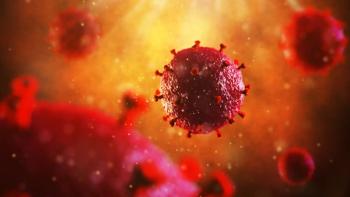
Opportunistic Infections Unmasked After Initiation of cART: What Is the Risk?
Immune reconstitution inflammatory syndrome is seen in some HIV-infected patients soon after initiation of antiretroviral therapy. The syndrome can “unmask” dormant opportunistic infections or aggravate existing infections.
Some patients with HIV infection develop an inflammatory syndrome within weeks to months after starting combined antiretroviral therapy (cART) therapy.1 The response, known as immune reconstitution inflammatory syndrome (IRIS), can lead to worsening of existing opportunistic infections or the appearance of previously dormant opportunistic infections.1 A recent study published in the journal AIDS provides insight into the pattern of opportunistic infections after initiating cART.3
The investigators examined data from the HIV-CAUSAL collaboration, which include HIV-positive individuals from prospective cohorts in 6 European countries and the United States. The study examined the incidence of several AIDS-defining conditions, including tuberculosis, Mycobacterium avium complex (MAC), cytomegalovirus (CMV) retinitis, cryptococcosis, progressive multifocal leukoencephalopathy (PML), herpes simplex virus (HSV), and Kaposi sarcoma. For each of these events, the investigators compared the estimated hazard ratio for no cART versus being on cART for less than 3 or for at least 3 months since starting cART.3
The study included more than 96,000 eligible individuals (78% men) with a median follow-up of 31 months. Of these patients, more than 55,000 started cART. Compared with non-cART initiation, the hazard ratio (95% confidence intervals) for patients with up to 3 months after cART initiation were 1.21 (0.90–1.63) for tuberculosis; 2.61 (1.05–6.49) for MAC; 1.17 (0.34–4.08) for CMV retinitis; 1.18 (0.62–2.26) for PML; 1.21 (0.83–1.75) for HSV; 1.18 (0.87–1.58) for Kaposi sarcoma; 1.11 (0.56–2.18) for cryptococcosis; and 0.77 (0.40–1.49) for candidiasis.3
Interestingly, except for mycobacterial infections (tuberculosis and MAC), unmasking IRIS was not common after cART initiation in Europe and the United States.
Before initiating cART, clinicians should fastidiously rule out MAC and tuberculosis in at-risk patients and provide close monitoring for these infections during the early treatment period.3
References:
- Shelburne SA, Montes M, Hamill RJ. Immune reconstitution inflammatory syndrome: more answers, more questions. J Antimicrob Chemother 2006; 57:167–170. http://jac.oxfordjournals.org/content/57/2/167.long
- HIV-CAUSAL Collaboration. Opportunistic infections and AIDS malignancies early after initiating combination antiretroviral therapy in high-income countries. AIDS. 2014 Oct 23;28(16):2461-73. doi: 10.1097/QAD.0000000000000456.
Newsletter
Enhance your clinical practice with the Patient Care newsletter, offering the latest evidence-based guidelines, diagnostic insights, and treatment strategies for primary care physicians.


















































































































































































































































































